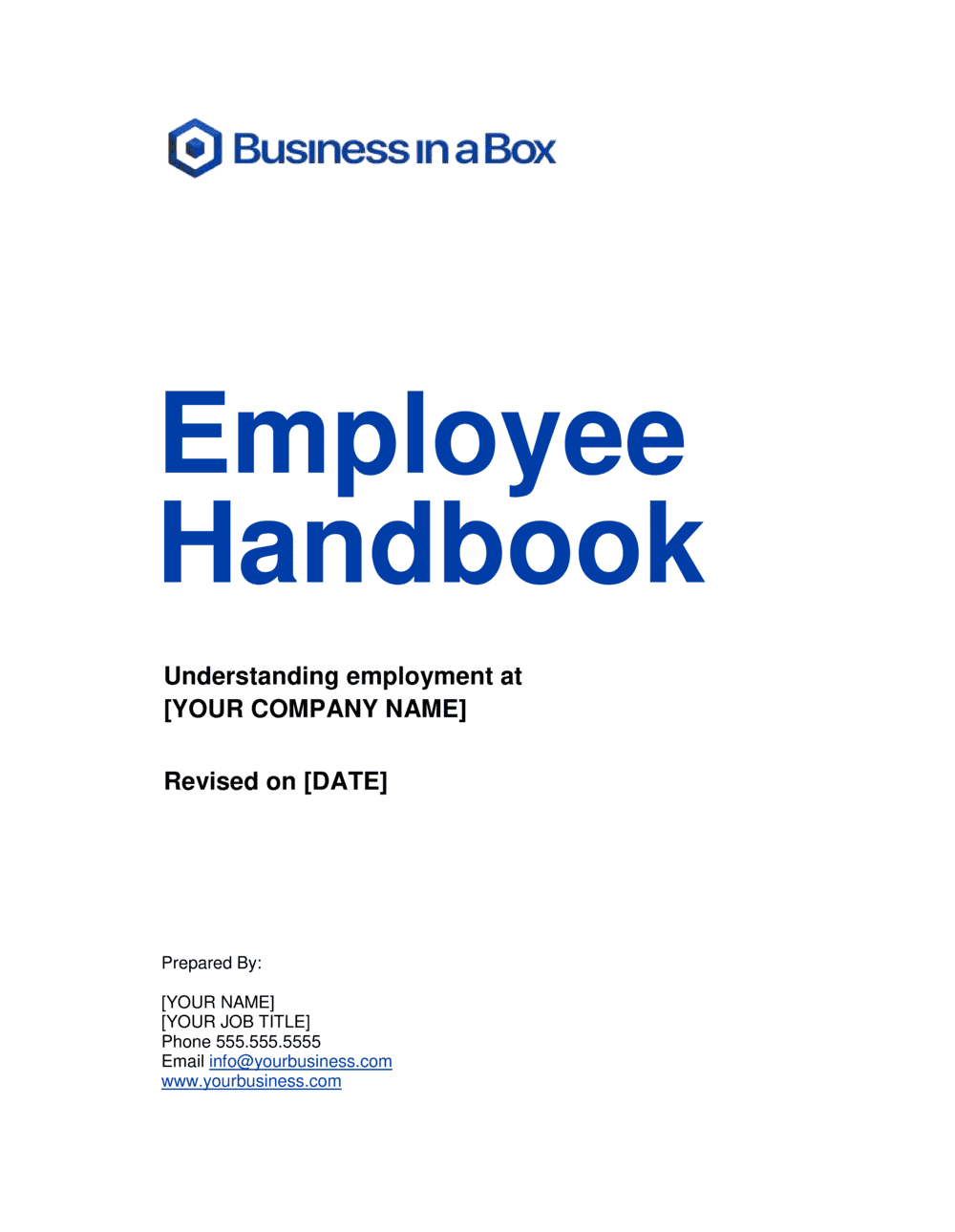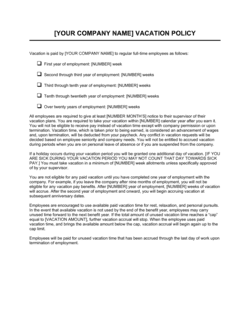
Small Company Employee Handbook Sample
This Handbook is intended to provide employees with a general understanding of some of the Company's personnel policies. It is not an employment contract or a legal document. The information in this Handbook should be helpful in familiarizing employees. Employee Handbooks An employee handbook helps new employees learn about the company rules, policies, culture, and values. It will also help protect the company from legal issues. New employees are usually provided with an employee handbook during the onboarding process. No matter how large or small your organization might be, you can derive significant benefit from having a well-crafted employee handbook that spells out your policies. The handbook should include both mandatory policies and any recommended policies applicable to your workforce. The employee handbook (and the newer, cooler “culture code”) is a great tool for employees, new and existing, to learn the company’s mission, values and norms. The handbook lays out expectations about everything from the dress code to employee benefits to conduct policy.
Though you’re not required by law to have an employee handbook, recording key policies can protect your business. Plus, it gives your employees the clarity they need to know how things work.
What is an employee handbook?
An employee handbook—or employee manual—is an important living document for your employees that outlines your company policies, history, and culture for current and future employees. Though 87% of small businesses sized 10-200 have employee handbooks, HR experts agree that it’s best practice to start a handbook as soon as you hire your first employee, as it defines expectations and can protect you legally.
Now back to business: here are the main policies you’ll want to record in that employee handbook:
1. Onboarding and joining the team
One of the top motivations for businesses to create an employee handbook is to train new hires. So kick things off by laying out the basics that every employee should know before the shimmy through the front door.
The employee onboarding section may include your:

- At-will employment clause
- Equal employment opportunity statement
- Conflict of interest statement
- Confidentiality agreement
- General details, such as directions to the office, team structure, and key contact info
A quick reminder about at-will employment
If there isn’t an agreement clearly stated in your employee handbook, then this type of employment is assumed in all states besides the Treasure State (also known as Montana).
Here’s an example of a sample at-will clause you can use as a model:
“Keep in mind that [your company] is an at-will employer. This means that either party can end the relationship at any point for any reason, with or without notice.”
2. Code of conduct
Even the most free-flowing organization has boundaries. Your code of conduct section should spell out the “10 Commandments” for life as a member of your team. If there’s anything that’s frowned upon, this section should cover it. For example, you can explain your:
- Dress code policy
- Anti-discrimination policy
- Anti-harassment policy
- Substance-free workplace policy
- Taking disciplinary action
3. Office environment
What’s life like at the office? This section of your employee handbook explains how, when, and where employees are expected to get things done. You’ll want to include hot topics like:
- Work hours
- Your work-from-home policy
- How to keep the workplace safe
- Americans with Disabilities Act (ADA) accommodations
- Use of company equipment

4. Communication policies
How does your team interact with each other? What about customers, vendors, and other partners? Some of this may seem like common sense, but it can still be helpful to spell it all out in your employee manual.
Set out your expectations for channels like:
- Social media
5. Compensation and performance reviews
Not to downplay other critical policies, but the next two sections are ones your employees will likely flip back to frequently.
Here’s a look at the policies you’ll want to cover:
- Job classification details
- Salary and bonuses
- Promotions and transfers
- Travel and expense policy
6. Benefits
Woohoo! Here’s where you list out the benefits you offer your team and explain how they match up with the values you celebrate. When someone’s finished reading this section, they should feel knowledgeable and well taken care of.
Open with a quick-reference section that outlines details such as which types of workers are eligible, when benefits kick in, and your plan’s policy number. Then, start with the essentials and work your way up to the icing-on-the-cake benefits:
- Health, disability, life, and workers’ comp insurance information
- Other leave policies, such as parental leave, sick leave, or jury duty
7. When someone leaves
Business In A Box Employee Handbook Template
It happens: Sometimes you just need to part ways. This section of your employee handbook should explain what happens when someone quits or gets terminated.
Explain the offboarding basics, such as:
- When your employee will receive their final paycheck
- How exit interviews work
- How Consolidated Omnibus Budget Reconciliation Act (COBRA) benefits work if someone is laid off or fired.
8. Your company story
And last, don’t forget to share who you are and why you’re here! (Okay, this isn’t really a policy, but it’s still important).
From your original vision to how your company came into being, your company’s story is the underlying foundation that inspires people to show up and do amazing things every single day. Bring new employees into the fold by sharing this history with them.
Ask yourself:
- Who is your company and what do you do?
- Why does it matter?
- Why should others care, too?
What do other small businesses have in their employee handbook?
Gusto conducted a survey of more than 330 businesses to find out what they’ve prioritized in their employee handbooks.
Here’s a behind-the-scenes look at the most common employee policies businesses include in their handbooks.
Business In A Box Employee Handbook Sample
| Policy | 1-9 employees | 10-200 employees |
| Work hours | 31% | 62% |
| Workplace safety | 29% | 69% |
| Company mission and values | 26% | 53% |
| Dress code | 22% | 56% |
| Use of company equipment | 22% | 49% |
| Salary and bonuses | 20% | 53% |
| Lunch and break periods | 19% | 53% |
| Substance abuse | 18% | 49% |
| Email and internet usage | 18% | 50% |
| Disciplinary action | 16% | 61% |
| Social media | 16% | 43% |
| Data privacy | 16% | 46% |
| Travel and expensing | 16% | 41% |
| Performance reviews | 15% | 56% |
| Termination and offboarding | 13% | 41% |
| Bullying | 11% | 36% |
| LGBTQ rights | 5% | 23% |
| None of the above | 41% | 4% |
Your employee handbook isn’t just a helpful reference doc; it captures the culture, values, and personality of your company.
Give every policy careful consideration and take time to make your employee handbook shine.
Your employee handbook allows you to navigate not only your business’ policies, but also your brand and your company’s vision.
While the idea of a “handbook” often conjures up a jumble of jargon and rules, writing one gives you a chance to express how your small business thinks about culture, how you treat your team, and how you celebrate success or endure hardships together. It’s a place to communicate the values that keep you on the path of true north.
Black Business In A Box
We’ve assembled some of our favorite employee handbook examples from companies whose handbooks and culture guides especially bring their voice and vision to life. Some of the examples below are company manifestos more so than employee handbooks—and yes, you can mesh the two—but keep in mind that a handbook has specific requirements it needs to fulfill (which you can learn more about here!).